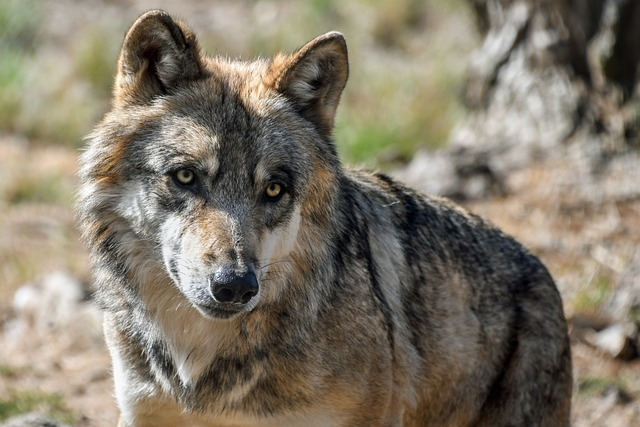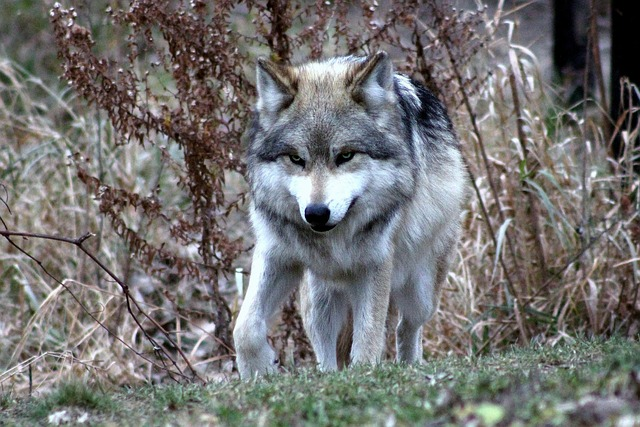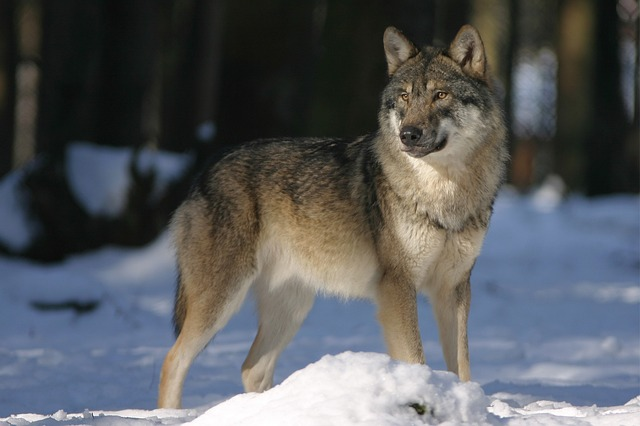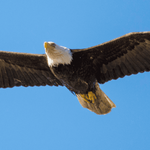The Gray Wolf, also known as the Timber Wolf or eastern timber wolf, has been a part of North American history for thousands of years.

These gray wolves live and hunt in a pack. Wolves played an important role in the environment, helping to keep prey populations such as deer and elk in balance. That is why wolf populations are important for our ecosystem.
Additionally, In 1960 the grey wolves were extinct in Wisconsin, North America. And for years this keystone species timber wolf or grey wolf was absent in Wisconsin states.
But due to conservation efforts, it is found that there are more than 600 wolves in the Wisconsin state in 2014, mostly habituated in half of the northern region.
Gray Wolf or Timber Wolf Characteristics
The timber wolf, also known as the eastern timber wolf inhabits forests and wilderness areas across North America.

Size
These wolves are one of the largest subspecies of wolves, with males typically weighing between 70 to 145 pounds and measuring up to 30 inches tall at the shoulder.
The females are slightly smaller, weighing around 60 to 100 pounds and measuring up to 5 to 6 feet in length.
Despite their large size, they are fast and agile runners, having running speeds of up to 60 km/h. Their size and strength make them apex predators in the ecosystems and an important part of the food chain.
Habitat
The timber wolf is found in a variety of habitats across North America. They are typically found in forested areas, such as coniferous forests, taiga, grasslands, tundra, and mountainous regions.
Diet
The timber wolves also called gray wolves are carnivorous animals their diet consists of large ungulates such as elk, moose, and deer.
They are also known to prey on smaller mammals like rodents, beavers, and rabbits. In some areas, they may supplement their diet with fish or other small prey.
Moreover, wolves are skilled hunters that work together in packs to take down their prey. They are also known to scavenge carrion when necessary.
Temperaments
The timber wolf is a highly intelligent and social animal that exhibits a range of complex behaviors. They are known for their strong pack bonds and their ability to communicate and cooperate with one another during hunts.
In general, they are shy and elusive animals that avoid humans whenever possible. However, they can become aggressive if they feel threatened or if their territory is invaded.
Wolves use various vocalizations, body language, and scents to communicate with each other, establish dominance within their pack, and warn off potential threats.
Wolf Pack
A wolf pack is a family unit of gray wolves, typically consisting of an alpha male and alpha female, that leads the other wolves in the pack. The other pack members have different duties, and various positions in a pack.
What Happened with the Timber Wolves in Wisconsin
Years back in Wisconsin state, timber wolves and humans used to coexist peacefully. But in 1830, the Europeans moved to Wisconsin and started development work. They turned the land into roads, buildings, and farms.

With this, they overhunted the bison and elk particularly, the primary diet of wolves. These changes in the landscape affected the wild animals. Some adjust to the new environment, and some get extinct, like wolves.
Besides it, the wild wolves also impacted cause of the mindset of the European colonist. They used to think that the wolves will eat all the edible animals and their livestock.
They got worried that their families would die out of hunger if wolves would eat all the elks, and deer.
Not even this, people passed legal laws against wolves with rewards. According to the reward law, people can kill uncountable wolves, and get monetary rewards for killing wolves.
This badly affected the wolf population in Wisconsin. But fortunately, in 1957 this brutal reward law changed.
By this time wolves were only present in Minnesota, Canada, and Alaska, and few were left in Wisconsin.
Additionally, the spark of the wild returned in the 1970s, when some wolf packs of timber wolves were found in northern Wisconsin.
But it was necessary to protect this new pack, for which in 1957 wolves were protected under the endangered species act, and entered on the endangered species list.
Conservation of Timber Wolf in Wisconsin.
In the year 1989, a group of responsible citizens decided to collaborate with the Department of natural resources and prepare a recovery plan for the timber wolf.
Tracking the wolf population in northern Wisconsin using different resources was part of the recovery plan.
This recovery plan was successful, as the wolf population recovered in Wisconsin state. And in 2004 the wolf population reached 373, and the status of wolf species shifted from threatened species to protected.
Additionally, on 27 January 2012, wolves were delisted from the endangered species list in Wisconsin states. But on 19 December 2014, the grey wolf was relisted by the federal court order as endangered species in the western Lake region and Wisconsin state.
Conclusion
The timber wolf is also known as the grey wolf and is a well-known wolf species. These wolves weigh around 70 to 145 lbs and are around 5 to 6 feet tall. Their natural habitat is forested areas, such as coniferous forests, taiga, and boreal forests.
Moreover, in 1960, they went extinct due to European colonists in Wisconsin. Thanks to the conservation effort of the natives of Wisconsin in collaboration with depart of natural resources. That brought back the timber wolf into the Wisconsin states.
Furthermore, they are now listed and protected under the endangered species act according to federal court orders. Check out the video below to explore more about timber wolf.
Frequently Asked Questions
Is timber wolf the biggest wolf?
The timber wolf or grey wolf is the largest wolf in the world.
What is special about a timber wolf?
They travel in packs and have a leader, the alpha wolf. Moreover, they are nocturnal in nature.
What’s the difference between a timber wolf and a regular wolf?
A grey wolf habituated in the forest might be called a timber wolf, and if living in tundra, then it is knowns as a tundra wolf.
What breed is timber wolf?
The gray wolf, (Canis lupus), is also called the timber wolf and belongs to the Canidae family.









